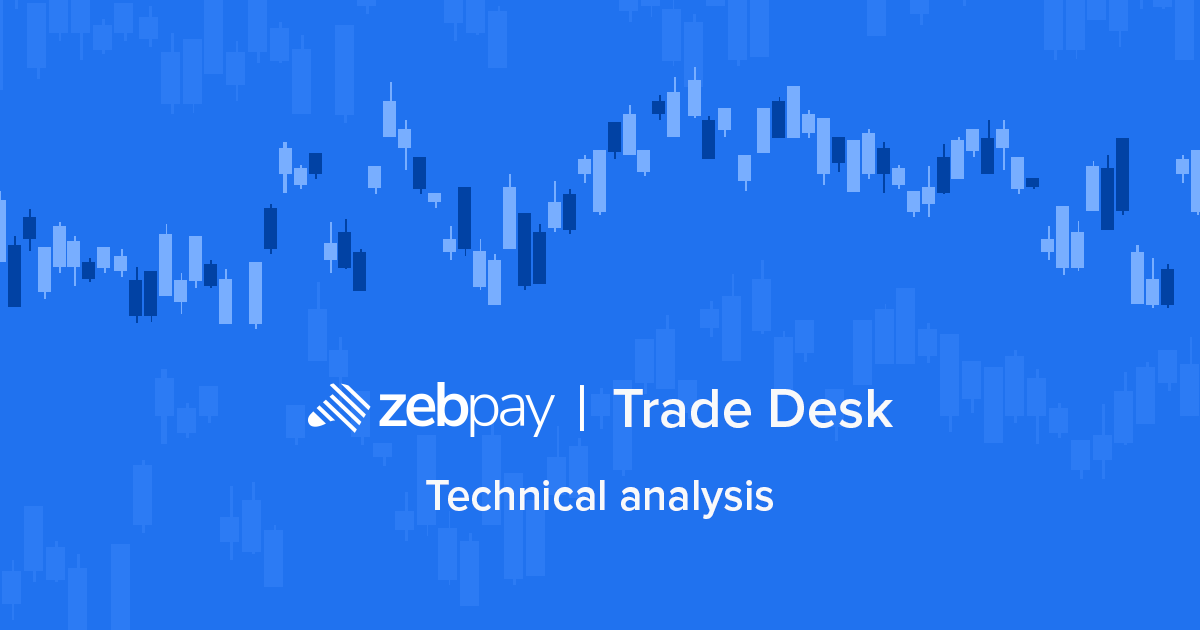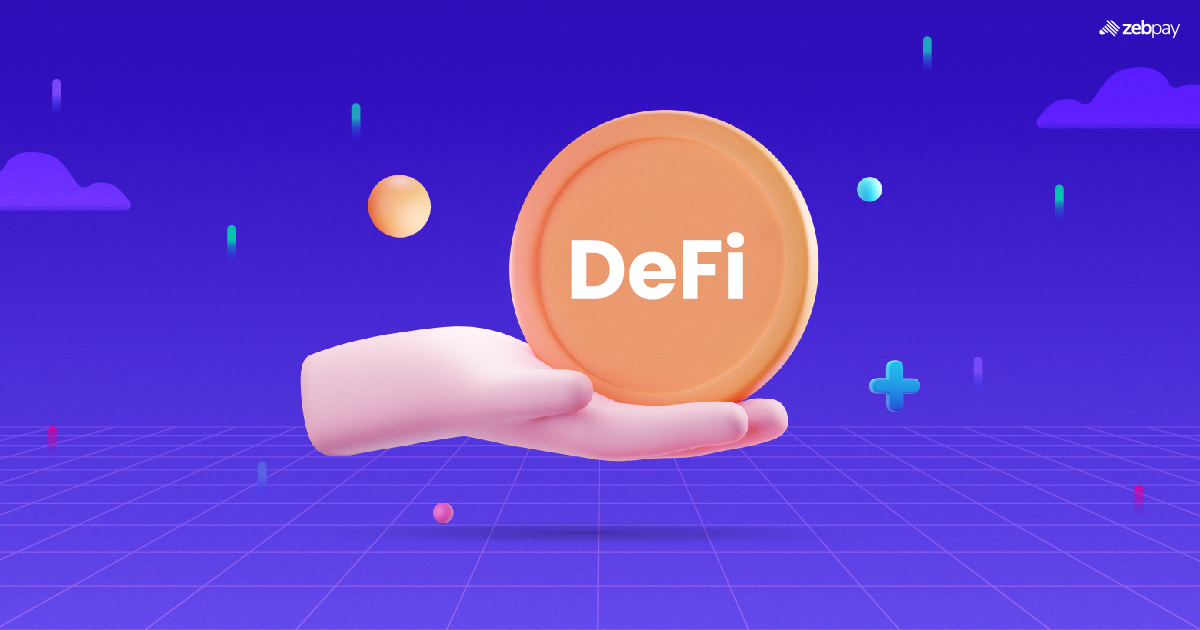30 June 2021 | ZebPay Trade-Desk
Decentralized finance or DeFi liquidity pools are simply a collection of smart contracts that lock up tokens to make sure liquidity is available for those tokens on a decentralized exchange. The users who contribute tokens to the smart contract are known as liquidity providers. These liquidity pools surfaced as an innovative and automated method of resolving the liquidity problem on decentralized exchanges. They substituted the traditional order book model which was used by the centralized exchanges, which was just a blatant copy of how things were done in established financial markets.
In the DeFi liquidity pool, the exchange acts as a sort of marketplace for buyers and sellers who come together and approve prices for different assets based on the relative demand and supply of it. However, there is a catch, this whole model is based on the assumptions that there are enough buyers and sellers to create liquidity. Hence, the market maker role is prevalent to guarantee that there is always someone to meet the demand, constructively keeping the prices just by contributing to the liquidity. Sadly this model didn’t work well for decentralized exchanges. Consider, Etheruem’s high and rising gas fees and slow block time make it not the best choice to market makers which leads to low liquidity for DEX’s attempt to recreate the order book model. There the liquidity pools have to become the substitute choice in decentralized finance, offering continued and automated liquidity for the decentralized platforms.
The easiest way to understand this is that a DeFi liquidity pool holds two tokens in a smart contract to form a trading pair. We will take Ether (ETH) and DAI Coin as an example, for simplicity let’s assume the price of ETH to be 1000 DAI. Liquidity providers place an equal amount of ETH and DAI to this pool, so someone putting 1 ETH has to match it with a 1000 DAI. The liquidity in the pool refers to the fact that when someone wants to exchange ETH for DAI they can do that on the basis of funds accumulated, instead of waiting for a counterparty to come along to match their trade order.
The liquidity providers are motivated for their offerings with rewards. When a deposit is made, they get a new token symbolizing their stake, known as a pool token. For our example, the pool token would be DAI-ETH. The trading fees given by users who swap tokens via the pool are distributed according to the proportion of their stake size automatically. Hence, the trading fees for the DAI-ETH pool are 0.3% and a liquidity provider has contributed to 20% of the pool; they are accredited 20% of 0.3% of the total value of all the trades.
Advantages and Disadvantages:
DeFi liquidity pools provide a lot of advantages for their users. The biggest one is probably the fact that they ensure a continuous supply of liquidity for traders who like to use decentralized exchanges to facilitate transactions. It also provides traders an opportunity to gain profits from cryptocurrency holdings. For this, they must become a liquidity provider, in return for which they earn transaction fees. Furthermore, some projects and protocols also offer additional incentives to LPs to ensure a large token pool is maintained, which reduces the risk of slippages and enriches user experience creating a better trading experience. Hence, an opportunity to benefit from yield farming also emerges, gaining reward tokens in return for becoming a liquidity provider. The larger and more popular protocols such as Uniswap, Balancer, and Yearn.finance usually reward liquidity providers using their own platform tokens.
The primary risk that these pools adopt is the fact that they are highly automated. The algorithm that helps determine how the price of the asset behaves may fail, which may result in high slippages and failure of various smart contracts which are running within. If the asset’s price has significant deviance from the global market price, arbitrage traders will spot this opportunity almost immediately, use it to their advantage to profit from price differences across different platforms, and earn on the variance. Such price fluctuations could impact liquidity providers, as they might incur a loss in the value of their deposits. This is known as an impermanent loss. However, if the LP withdraws its deposit, the loss is permanent. Depending on the size of the deposit, and the time for which it is staked, the loss could be big enough to offset the gains from transaction fees. Secondly, due to the design of the pricing algorithm, smaller liquidity pools may suffer from higher slippages, if someone suddenly places a large trade, as these liquidity pools are more prone to manipulation attacks. DeFi has to deal with other risks as well users face, such as smart contract failure, if the underlying code is not audited regularly and the protocol is not entirely secure.
Investment Analysis:
| UNISWAP | Jan 2021 | Feb 2021 | March 2021 | Apr 2021 | May 2021 | Jun 2021 |
| Price (US $) | 8.95 | 22.00 | 29.89 | 33.64 | 32.67 | 21.86 |
| MoM ROI (%) | 151.06% | 145.73% | 35.85% | 12.54% | -2.89% | -33.07% |
| Volume | 2.96 | 1.36 | 0.85 | 0.99 | 1.12 | 0.44 |
| % growth | 365.18% | -54.07% | -37.68% | 16.55% | 13.14% | -60.58% |
| Market Cap | 2.52 | 6.61 | 14.88 | 17.60 | 17.96 | 12.51 |
| % growth | 178.34% | 162.54% | 125.10% | 18.25% | 2.03% | -30.34% |
The above table shows us the price movement of the Uniswap token along with how the market cap and volume look for it. UNI, the native coin of Uniswap, has seen tremendous growth in the price of the asset. It has increased by around 144% within these 6 months only. The volume had a quick rise in January but the market settled up and it has been doing well. UNI token is currently the 10th largest asset in terms of market capitalization. It has been rising the ladder of market cap and soars by a boom of approximately 365% since January but the recent competition of new DeFi tokens seems to be giving it a tough competition.
| SUSHISWAP | Jan 2021 | Feb 2021 | March 2021 | Apr 2021 | May 2021 | Jun 2021 |
| Price (US $) | 6.06 | 15.29 | 17.93 | 14.31 | 14.08 | 9.01 |
| MoM ROI (%) | 149.16% | 152.36% | 17.27% | -20.18% | -1.58% | -36.01% |
| Volume | 0.65 | 0.88 | 0.54 | 0.49 | 0.98 | 0.28 |
| % growth | 196.64% | 34.78% | -38.42% | -9.85% | 99.34% | -71.35% |
| Market Cap | 0.81 | 1.95 | 2.28 | 1.82 | 1.79 | 1.15 |
| % growth | 95.82% | 141.17% | 17.27% | -20.18% | -1.58% | -36.01% |
Sushi has been cooking and selling pretty well since this January. The price of the asset has improved by approx. 49% in these 6 months. The volume is also keeping up at good levels despite it being somewhat volatile since March. Market reset contributed to additional volume loss. Ranking at 68th in terms of market cap it has found a niche place for itself in this ever-growing market. Since January it has grown by around 41%. After launch for other DeFi tokens, it has taken a small blow but hasn’t lost the race yet.
Uniswap has been leading the market in terms of DeFi, a widely known decentralized trading protocol. It’s popular for its role in opening doors for automated trading of decentralized tokens. A genius example for AMM, it was launched back in 2018 but has risen to great heights of popularity this year credit to the DeFi phenomenon and linked the surge in token trading as we can see in the chart above.
SushiSwap is another great example of AMM. Which is becoming extremely popular among crypto users and enthusiasts. It was launched in September 2020 as a fork to its cousin Uniswap which is equivalent to the DeFi movement which led to a boom in the trading of DeFi tokens. The main purpose of this dish is to expand the AMM market and add features not present previously. The native token is called Sushi which is used as a reward to increase network participation. It is a freely traded token present in ZebPay too.
Looking back over the last few years, certain tokens that helped power decentralized finance protocols all around the world, becoming increasingly popular. The example we discussed to understand the liquidity pools is a sample based on the UNISWAP model. Balancer, SushiSwap, Curve Fiance, and Balancer all operate liquidity pools. They all use the liquidity pool system to fuel their market. The largest curve pools are multi-token which focuses on stablecoins. These pools are a game-changer for the cryptocurrency market. And is trending all in 2021 quite a lot. The DeFi tokens have gained significant traction too, their prices and volume have risen extraordinarily. Indicating that people are investing in these coins, maybe acting as a Liquidity provider or buying from the DeFi pools. Uniswap and other hotshot DeFi Exchange come up with upgrades every now and then bringing the top-notch tech in the Crypto space and red hot innovations.
Disclaimer: This report is not intended to be relied upon as advice to investors or potential investors and does not take into account the investment objectives, financial situation or needs of any investor. All investors should consider such factors in consultation with a professional advisor of their choosing when deciding if an investment is appropriate. The Company has prepared this report based on information available to it, including information derived from public sources that have not been independently verified. No representation or warranty, express or implied, is provided in relation to the fairness, accuracy, correctness, completeness or reliability of the information, opinions or conclusions expressed herein. This report is preliminary and subject to change; the Company undertakes no obligation to update or revise the reports to reflect events or circumstances that arise after the date made or to reflect the occurrence of unanticipated events. Trading & Investments in cryptocurrencies viz. Bitcoin, Bitcoin Cash, Ethereum etc. are very speculative and are subject to market risks. The analysis by the Author is for informational purposes only and should not be treated as investment advice.







